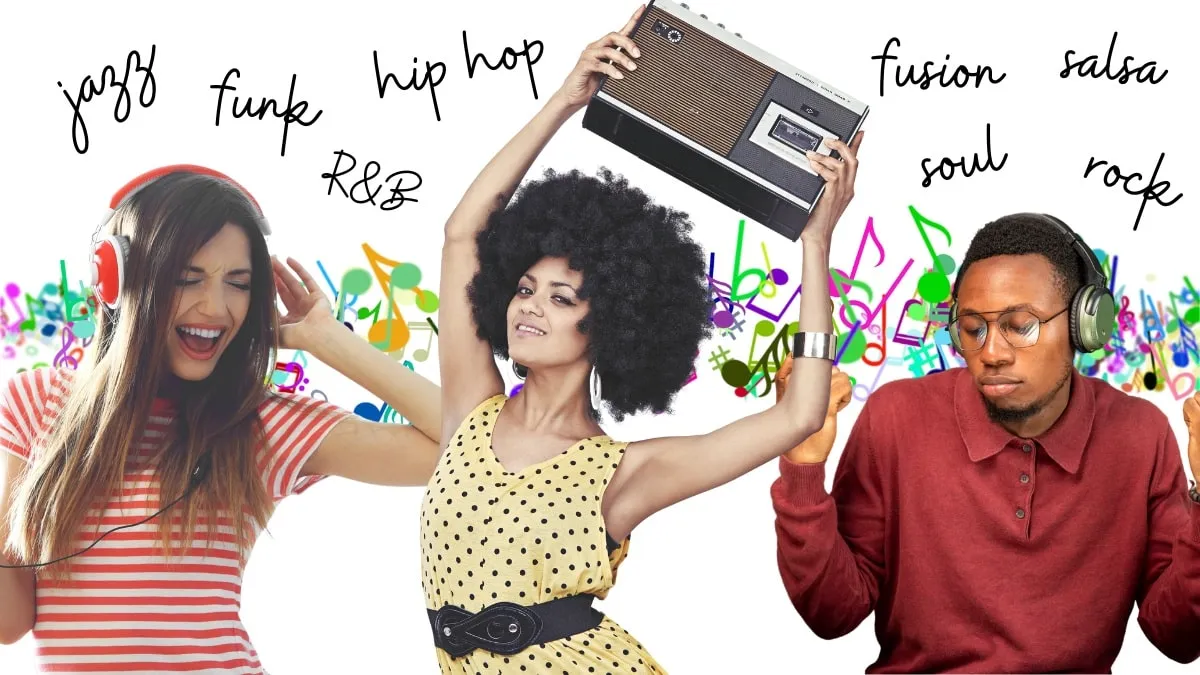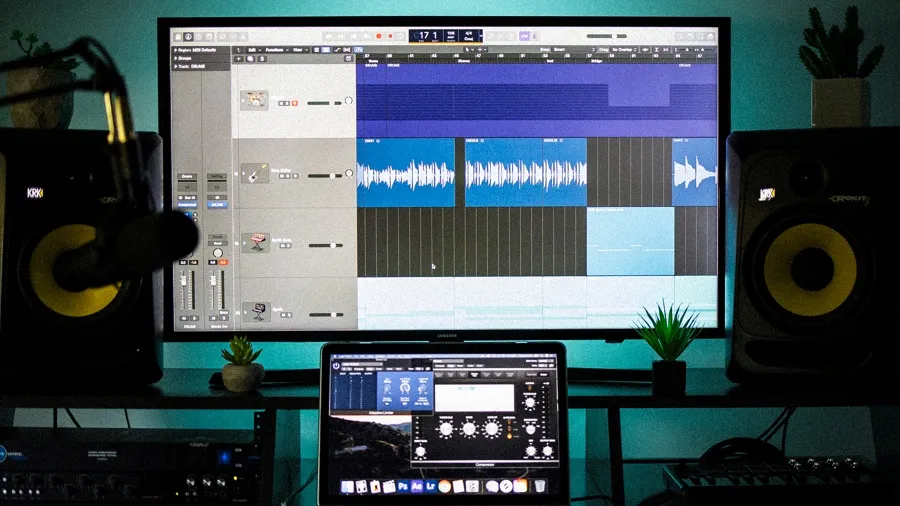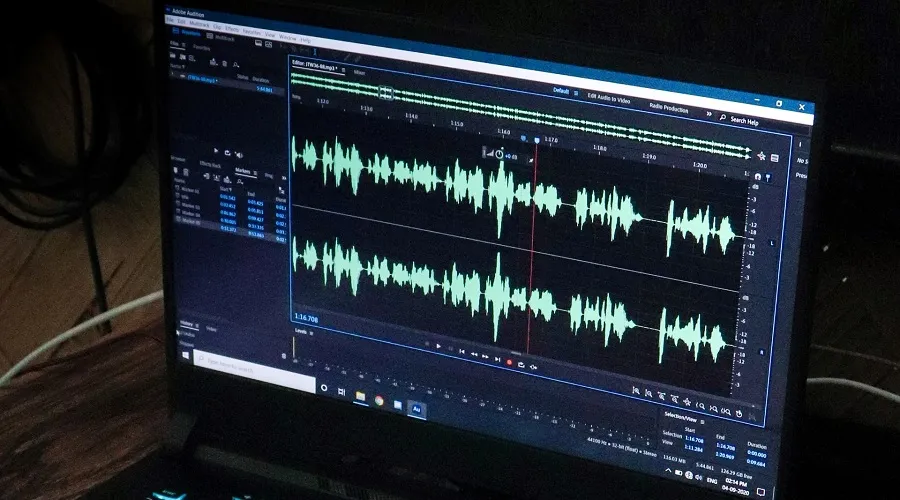Groove is a word that gets thrown around a lot in musical discussions, but when you ask what it means, most musicians won’t give you a satisfying answer beyond “It’s a feel.” or “It’s what makes music sound good.” or something similar.
It’s not that such answers are wrong, but there’s much more to the term ‘groove’ than you’d expect. It’s an entire process that affects you emotionally and physically.
So, what is ‘groove’ in music? Keep reading to find out.
What is Groove in Music?
In music, the term ‘groove’ is used to describe how people sense the effect of changing the pattern in a propulsive rhythm. In other words, ‘groove’ is what you “feel” while listening to repeated rhythms.
The groove of a song often refers to the rhythmic feel of its music and the way that instruments of the rhythm section interact to create a combined rhythmic effect. ‘Groove’ is also used as a practical term in Electronic music production.
The Groove “Feel”
Now, let’s go a bit deeper and explain what ‘groove’ means as a “feel”. As I mentioned above, ‘groove’ is an effect that you sense when a pattern changes in a propulsive rhythm.
It’s a quality of continuously repeated rhythmic units, formed through the interaction of the instruments in a band’s rhythm section (such as drums, keyboards, guitar, and electric bass or double bass). It’s also an essential feature of Popular music, present in various genres including Jazz, Salsa, Soul, Hip-Hop, Rock, R&B, Funk, and Fusion.
If we step back and look at ‘groove’ from an ethnomusicological point of view, we’ll find that Feld (1988) had a broader definition of the term as “an unspecifiable but ordered sense of something that’s sustained in a distinctive, regular and attractive way, working to draw the listener in”.
It wasn’t until the 1990s that musicologists and other scholars started to analyze the concept of ‘groove’, suggesting that it’s an understanding or feel of rhythmic patterning, an emotion-driven sense that results from carefully-arranged rhythmic patterns that act collectively to stimulate dancing, head-nodding, or foot-tapping in listeners.
As such, connecting the ‘groove’ of music to dance is inevitable. In fact, according to Barry Kernfeld, when a song or performance “has or achieves groove”, this usually means that it has the ability to compel the body to move.
This claim checks out too, as the term ‘groove’ is often associated with musical performances that make people want to move or dance.
Groove vs. Swing
In the world of Jazz, the word “Swing” was typically used to describe the cohesive rhythmic sense of a skilled band. But with the development of music and the appearance of new subgenres such as Latin Jazz and Organ Trio, the term “groove” became almost a synonym to “swing” since the 1950s.
The expression “in the groove” (as the classic big band Jazz composition by pianist and arranger Mary Lou Williams) was generally used when describing great Jazz numbers in the 1930s and 1940s, at the peak of the Swing era. In the 1940s and 1950s, the term became a common reference to musical routines, preferences, and styles.
Herbie Mann, the esteemed Jazz flute player, talked a lot about searching and finding “the groove” throughout his career.
According to Jim Newsom, “In the 1950s, Herbie found it, along with initial success, in Afro-Cuban and Latin music. He subsequently locked into a Brazilian groove in the early 1960s, then moved into a funky, soulful groove in the late 1960s and early 1970s. By the mid-1970s, he was making hit disco records, still cooking in a rhythmic groove”.
Mann described his strategy to find “the groove” as finding the waves that you’re comfortable riding.
Groove vs Flow
‘Flow’ is a similar concept to ‘groove’ or ‘swing’. It’s usually used in music genres such as Hip-Hop.
As such, when Hip-Hop artists refer to the rhythmic groove of the music, they describe it as ‘having flow’ the same way that Jazz artists call it ‘swing’.
The Science of ‘Groove’
Although groove has always been categorized as an “unexplained phenomenon” in music, much like an unspoken rule, there have been several trials to explain groove in music from a scientific perspective.
These researches included several musicians, psychologists, and even neuroscientists in an effort to understand groove in music.
One of the attempts to identify groove scientifically was in a research study in 2012 called “Sensorimotor coupling in music and the psychology of the groove”. According to this study, a groove is an example of coordination and coupling between sensory and motor neural systems.
The study also found that this coupling is a result of a dynamic process where every single stimulus is attributed to a wide variety of motor commands and not just one, which explains why grooving depends on a huge variety of factors.
In other words, the pleasurable sense or result of the groove depends on a multitude of factors, such as biophysical and synaptic processes, experiences, feedback connections in the brain, and other external and internal stimuli.
Another example where ‘groove’ was mentioned in the science of music is associated with recent research about modern Rock music micro-timing and how they’re deeply controlled by the phenomenon of “grooving”.
The study showed that evident examples of grooving could be observed in drum patterns, despite not showing deviation in the timing of the music.
Groove from Musicians’ Perspectives
To have a more comprehensive understanding of the term ‘groove’, it can be very helpful to get insight into how other musicians interpret this concept.
I said before that ‘groove’ is an elusive term that resembles the term ‘swing’, which describes the rhythmic “feel” in Jazz, but the following examples may resolve some of your confusion:
- In the article Establishing The Groove, Marc Sabatella suggests that ‘groove’ is a totally subjective thing. He argues a given drummer may sound too stiff for one person, too loose for someone else, and just perfect for another.
- A bass educator in Creating The Groove says that despite being an elusive concept, we can define ‘groove’ as the thing that makes the music breathe, but also the thing that sets our bodies in motion in the context of a song.
- Steve Van Telejuice describes the term ‘groove’ as a point in a song or musical performance when “even the people who can’t dance wanna feel like dancing…” because of the way the music affects them.
Bernard Coquelet continues to argue that the ‘groove’ “is the way an experienced musician will play a rhythm compared with the way it is written (or would be written)” by playing a little “before or after the beat”.
Coquelet goes on to claim that the “notion of groove actually has to do with aesthetics and style”; “groove is an artistic element, that is to say, human,…” and “it will evolve depending on the harmonic context, the place in the song, the sound of the musician’s instrument, and in interaction with the groove of the other musicians”, which he calls “collective” groove”.
This is the reason why minute rhythmic variations by the rhythm section instruments such as the drummer or bass player can significantly change the ‘groove’ of a band as it plays a song, even if we’re talking about a simple singer-songwriter groove.
What’s the Difference between Beat, Rhythm, and Groove?
One of the most common confusions among music students and amateur musicians is the difference between beat, rhythm, and groove. These terms are often used interchangeably, but that’s not right, and here’s why.
The steady pulse of the music is called the beat, whereas the change in the duration of what’s being played or sung is called the rhythm. Let’s take a pause here to give you a better idea of the difference between beat and rhythm.
A simple exercise that music teachers often use to explain this difference to their students is through movement. They assign walking to the beat and assign clapping to the rhythm. While listening to a song, students won’t be doing the same thing with their feet and hands, so it becomes clear that beat and rhythm are two different things. Give it a try yourself and you’ll come to the same conclusion.
The deeper you dive into the study of music, however, you may start to use the term ‘beat’ in a different way – probably to describe the overall rhythmic effect of the music. Now, this right here is what we can more accurately describe as ‘groove’.
As such, ‘groove’ is how beat and rhythm collectively affect the body. In other words, ‘groove’ describes the way our body moves in response to hearing music.
This is why if you just label groove as beat, you’re completely overlooking the rhythmic structure of the music. The shared effect of beat and rhythm is also why, whenever we change either beat or rhythm, the groove will be affected.
How Can You Find Your Groove?
If you’re trying to find your ‘groove’ or ‘feel’ when producing music, here are a few tips to help you on your mission:
Listen More
The first thing you need to do is broaden your music listening range and include various genres that you’re not too familiar with. Believe me, it’s easy to get your creativity trapped inside the comfort zone of the genres you usually listen to.
Listening to different genres can be a major source of inspiration. It opens up new doors to experimenting. For example, you can try applying the ‘groove’ of a Swing song to your next House track and see what happens.
Incorporate the Keyboard
Many musicians and producers rely on quantizing to get more control over their musical performances. But to achieve ‘groove’, using your keyboard to only input notes isn’t going to cut it. You’ll need to put more effort into practicing the keyboard so that the level of musicality of your chosen notes can actually make a difference.
Play the Drums
As I explained earlier, the ‘groove’ of a song is manifested in the way its repeated rhythm affects our body, which is the main job of the instruments in a band’s rhythm section.
Since the drums are one of the leading instruments when it comes to rhythm control, you can easily add ‘groove’ to a track if the relationship between the track and the drums is more natural and not merely programmed in. This may not always be possible with all rhythm instruments, but drums are an exception.
You can use your keyboard or better yet, use a drum pad to make sure that the drum and perc parts of your track have your unique ‘feel’.
Review Your Quantizing Decisions
Most DAWs (digital audio workstations) nowadays have full-strength quantizing value as the default setting. This means that when you input performed notes in real-time, they’ll be adjusted 100% to a grid.
This isn’t the ideal quantizing decision if you’re trying to add your ‘groove’ to the track. Instead, you need to apply a more diluted form of quantizing.
Playing a part in your track in real-time allows your own ‘feel’ to enter the project and gives it a personal touch that programs often lack. This is an essential aspect of ‘groove’.
As a start, consider quantizing at 50% strength. This way, you’ll get your notes closer to “perfect time” without giving up too much of your character.
You may be intimidated to go low with quantization as a lot of musicians use it to make up for playing deficiencies, but you also may just end up with a pleasant surprise if you let your project keep some of its natural ‘feel’.
Humanize Your DAW
As I explained above, 100% strength quantizing keeps you from creating a ‘groove’. While it’s easy to bring down quantizing to a part you play in real-time, what about if you’ve manually drawn in a line of notes, or in step-time, and now each one is locked to a grid?
In this case, reducing the quantizing strength won’t make a difference, which means so you’ll need to use another function of your DAW to handle the situation.
The function I’d recommend is “humanize”. This is one of the functions that allow you to apply “destructive” changes to MIDI notes.
To be more accurate, ‘humanize’ lets you make subtle adjustments to the position, length, and velocity of notes to incorporate a certain level of subtle “human” variation.
Allow the Groove to Unfold
‘Groove’ has yet another bone to pick with quantizing. Let’s say that you’ve selected a 1/16th note as your quantizing resolution, which will cause each 1/16th note to snap to a grid position. The issue will still persist, even if you choose a value with ‘swing’ because you’ll still be tying two notes together in every single pair of 1/16th notes – one in time and the next a bit later.
The thing is, this doesn’t create a ‘groove’ because ‘groove’ often unfolds over a bar, 2 bars, 4 bars, or even 8 bars. This doesn’t mean you can’t form a groove into an identifiable structure, it just means that you need to allow the groove to unfold over a longer time interval.
This way, your project will sound more musical and better refined.
Create Your Own Quantize Templates
Another tip to help you find your ‘groove’ is if you create quantize templates according to your own rhythmic feel. If you wish to make that clear foundation more subtle, try applying another feel to the next instrument you play.
Just imagine quantizing one row of 1/16th notes with a straight rhythm and then quantizing another with an intense swing rhythm. Talk about confusing!
As such, creating a Groove Template can be a great way to analyze the highlights in a groove and form a quantizing map of the positions of these notes. You can then apply this map to other instruments and quickly lock them to a custom groove.
Recognize the Value of Live Performance
Finally, I strongly recommend you invest time in live performance. If you’re someone who stays cooped up in a studio to make music, detaching yourself from playing live can be too easy. Here, I’m not talking about DJs – unless you like to overdub your material with live musical shows.
There are multiple reasons why the live music scene is so closely related to having a ‘groove’. One of the major ones is the strong ‘feel’ that you can experience when seeing artists performing in a visual musical setting.
As I’ve mentioned earlier, the drum and bass players of a band make up the rhythm section. This explains how the shared musical performances of these two instruments create the groove of the band.
What is ‘Rare Groove’?
Another term you may come across that involves ‘groove’ is ‘rare groove’, which is a musical subgenre that describes music that’s hard to find or relatively obscure.
Rare groove is primarily associated with Funk, R&B, and Jazz Funk. It also has connections to other subgenres, such as Jazz Rock, Reggae, Latin Jazz, Soul, Rock, Northern Soul, and Disco.
The term “rare groove” originated in the UK in the 1970s, and was used to describe a genre of music that was influenced by Funk, Soul, Jazz, and R&B. It was characterized by its use of obscure, hard-to-find tracks that were not widely known or played on mainstream radio.
One of the defining features of rare groove was its emphasis on the groove or rhythm of a song, with funky and danceable beats, and prominent and catchy basslines.
What is Groove in Music: Conclusion
Groove is a term that’s been described in a number of ways, predominantly as a “feel” for a beat, tempo, or rhythm.
Groove is not a tangible thing. It’s not something you can reach out and touch. It’s more about the way it makes you feel.
It’s that soul-deep way that music speaks to you, evident in the way your head dips in time to the music, or your foot taps along to the beat.















